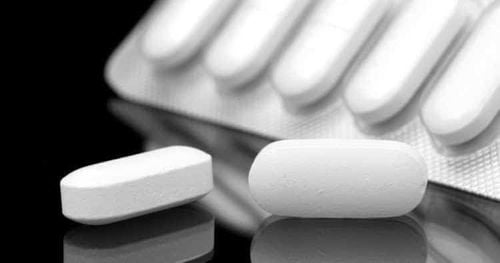This is an automatically translated article.
Cow's milk allergy is an abnormal response of the immune system to cow's milk and dairy products. Signs and symptoms of mild to severe milk allergy include wheezing, vomiting, hives, and digestive problems. A cow's milk allergy can also cause anaphylaxis—a serious, life-threatening reaction. Therefore, avoiding cow's milk and dairy products is the primary treatment for a milk allergy.1. Cow's milk allergy
Cow's milk allergy (CMA) - also known as cow's milk protein allergy - is one of the most common types of food allergy in children. Cow's milk allergy usually develops when cow's milk is first introduced into a child's diet or when he or she begins solid foods.
Allergic reactions can also occur in infants who are exclusively breastfed (rarely) because cow's milk from the mother's diet can be passed to the baby through breast milk.
There are two main types of cow's milk allergy (CMA):
Immediate cow's milk allergy: symptoms usually begin within minutes of drinking cow's milk. Delayed cow's milk allergy: symptoms usually begin hours or even days after drinking cow's milk.
2. Causes of cow's milk allergy
All food allergies are caused by immune system malfunction. If you have a cow's milk allergy, your immune system identifies certain milk proteins as harmful, triggering the production of immunoglobulin E (IgE) antibodies to neutralize the protein (allergen). If there is further exposure to these proteins, the IgE antibodies recognize and signal the immune system to release histamine and other chemicals that cause a range of allergy signs and symptoms.There are two main proteins in cow's milk that can cause allergic reactions: casein (found in the solid part of milk) and whey (found in the liquid part of milk).

Sữa bò gây dị ứng ở trẻ nhỏ
3. Symptoms of cow's milk allergy
Symptoms of cow's milk allergy can vary and occur between a few minutes and a few hours after consuming the milk. A cow's milk allergy can cause a range of symptoms including:Skin reactions. Such as redness or swelling of the lips, face and around the eyes Digestive problems. Such as stomach pain, vomiting, abdominal pain, diarrhea or constipation. Symptoms like hay fever. Such as a runny or stuffy nose. Eczema Occasionally a cow's milk allergy can cause severe and sudden symptoms such as swelling in the mouth or throat, wheezing, and difficulty breathing. In addition, there are other serious symptoms such as anaphylaxis.
4. Some risk factors
Several factors can increase your risk of developing a milk allergy:Other allergies. Many children allergic to milk will be allergic to other foods. Milk allergy may develop before other allergies. Allergic dermatitis. Children with atopic dermatitis are more likely to have food allergies Family history. A person's risk of food allergy is increased if one parent or both has a food allergy or an allergic disease such as asthma, hives, etc. Age. Milk allergy is common in children. Because the digestive system is immature at this time, it is more likely to react to milk.
5. Treatment of cow's milk allergy
If a child has been diagnosed with a cow's milk allergy, a general practitioner or allergist should be consulted about how to manage the allergy. Treatment for a cow's milk allergy is to eliminate all cow's milk from a child's diet for a period of time.If the baby is formula-fed and to avoid the infant formula allergy, it is necessary to contact the doctor for advice and prescription of a special infant formula. Definitely do not give your child any other formula without consulting a medical professional. If the baby is exclusively breastfed, the mother will be advised to avoid all cow's milk products. Because cow's milk can be passed from the mother's diet to the baby through breast milk causing an allergic reaction to the infant's milk. Babies should be tested every 6-12 months to determine if they have had an allergic reaction to cow's milk.

Trẻ bị dị ứng, cha mẹ nên đưa trẻ đi khám chuyên khoa Nhi
6. Some Learn More About Cow's Milk Allergy
Lactose intolerance is a type of reaction to milk, when the body cannot digest lactose - the natural sugar in milk. However, this is not a milk allergy. Lactose intolerance may be temporary. For example, it may appear days or weeks after stomach upset.
Symptoms of lactose intolerance include: Diarrhea, vomiting, abdominal pain, ...
Lactose intolerance treatment depends on the child's degree of lactose intolerance. Some children with lactose intolerance can still eat small amounts of dairy products without any symptoms.
To prevent allergies to foods including milk, the only way to avoid these foods or milk and dairy products is to avoid them. Also, read food labels carefully before purchasing so you can look for ingredients that cause milk allergies.
To register for examination and treatment at Vinmec International General Hospital, you can contact Vinmec Health System nationwide, or register online HERE
Reference source: Mayoclinic.org; Nhs.uk
MORE:
Milk allergy: Causes, symptoms, diagnosis and treatment Signs of children with cow's milk protein allergy Symptoms of milk allergy in children













